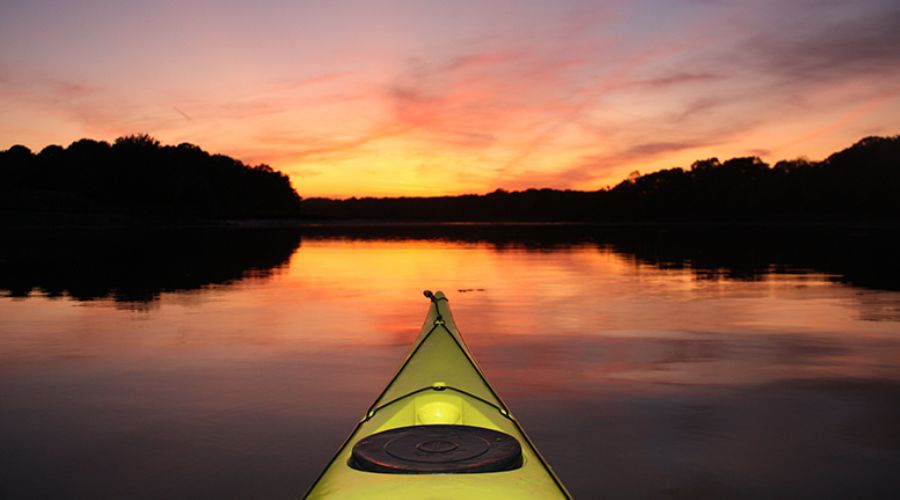Lifestyle of Andaman and Nicobar Islands
The lifestyle in the Andaman and Nicobar Islands is influenced by the region’s diverse cultural heritage, natural environment and island geography. The lifestyle of the people in the Andaman and Nicobar Islands is simple and deeply connected to nature. Islanders rely on the sea and forest for resources and sustenance, leading to a way of life that’s in harmony with the environment. Due to the islands’ history as a colonial penal colony and subsequent settlement by people from various parts of India, the islands are home to a mix of Bengali, Tamil, Telugu, Nicobarese and other ethnic groups. This diversity is reflected in the festivals, languages, food and traditions of the islands. Fishing and agriculture are major occupations, providing livelihood and sustenance. Agriculture is practiced in certain areas, with coconut, areca nut, rice and vegetables being common crops.
Suggested Read: How to reach Andaman and Top restaurants in Andaman
The islands are home to indigenous tribal communities such as the Great Andamanese, Onge, Jarawa and Nicobarese. These tribes have unique lifestyles, distinct from the more modernized society of settlers. Their way of life is typically self-sufficient, relying on hunting, gathering and small-scale agriculture.
Tourism has become a significant part of life for many islanders, particularly on Havelock and Neil Islands. Locals are involved in running hotels, eco-resorts, diving schools and tour services, allowing visitors to experience the beauty and culture of the islands. The cuisine of the Andaman Islands includes seafood as a staple, with fish, crab and prawns commonly prepared in various ways. The food also features a blend of Indian culinary influences, with dishes influenced by Bengali, Tamil and other regional cuisines. The lifestyle on these islands is a blend of tradition and modernity, with an emphasis on conservation and living sustainably.
Suggested Read : Andaman tour packages
Andaman Island Hopping: Major Tourist Attraction
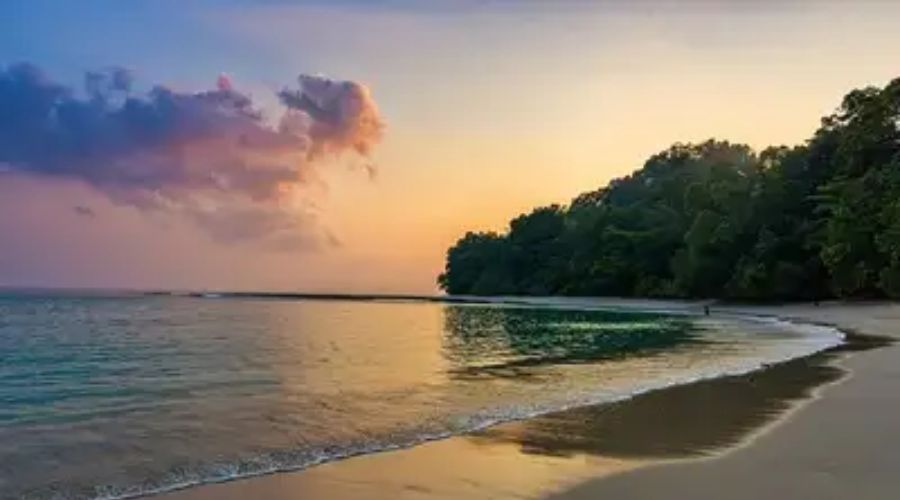
Island hopping in the Andaman Islands offers a chance to experience diverse natural beauty, rich culture and unique island communities. Here’s an overview of what island hopping and cultural exploration in the Andamans involve:
Among the most beautiful and prominent islands included in the Island Hopping spree are the following major ones.
- Havelock Island: Known for Radhanagar Beach, Elephant Beach and diving sites like Neil’s Cove, Havelock is a top destination for water sports and beach relaxation.
- Neil Island: A quieter island, popular for its serene beaches like Bharatpur and Laxmanpur, and ideal for snorkelling and underwater exploration.
- Ross Island: A historical island near Port Blair, it was once the administrative headquarters of the British and now has ruins and deer roaming freely, offering a glimpse into colonial history.
- Baratang Island: Famous for its mangrove creeks, limestone caves and mud volcanoes, offering a unique experience for nature lovers.
- Little Andaman and North Andaman: These islands are less frequented by tourists but offer scenic waterfalls, surfing opportunities and a more rustic charm.
Suggested Read : Diglipur andaman island
Andaman: Land of Unique Cultural Experience
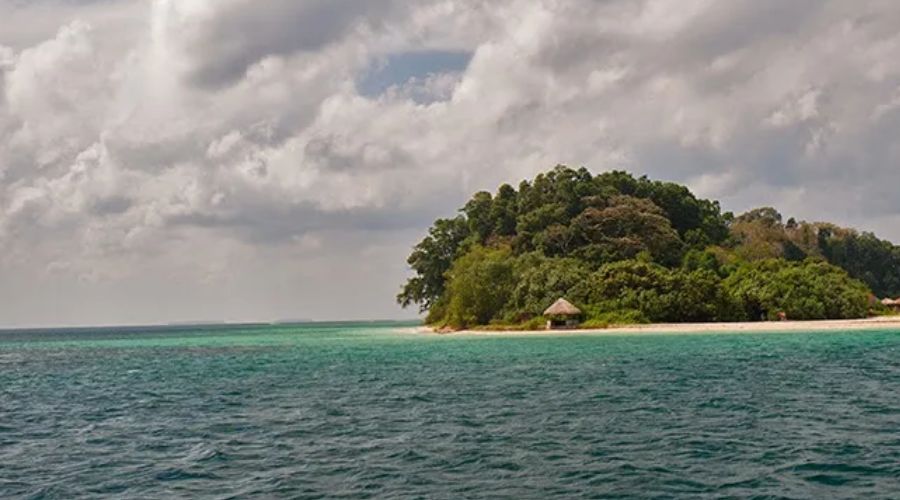
- Diverse Communities: The Andaman Islands have a mix of mainland settlers and indigenous tribal groups, each contributing to the region’s cultural fabric. The settlers have brought various languages, cuisines and festivals, creating a multicultural environment.
- Tribal Cultures: Indigenous groups like the Jarawa, Great Andamanese, Onge and Nicobarese have distinct cultural identities. However, many tribal communities remain isolated and are protected by government regulations to preserve their way of life.
- Local Festivals: Festivals like Durga Puja, Pongal and Diwali are celebrated due to the multicultural population. In addition, the Island Tourism Festival, held in January, showcases local art, handicrafts and performances.
- Handicrafts: The islands are known for shell and woodcraft. Visitors can find unique, locally made handicrafts in Port Blair’s markets as well as on smaller islands.
Island hopping allows visitors to see a variety of landscapes and ecosystems, from tropical beaches and coral reefs to dense mangroves. It’s a great way to experience both the natural beauty and the cultural diversity of the Andamans.
Suggested Read : Top 5 things andaman
Delicious and Exotic Foods of Andaman & Nicobar Island
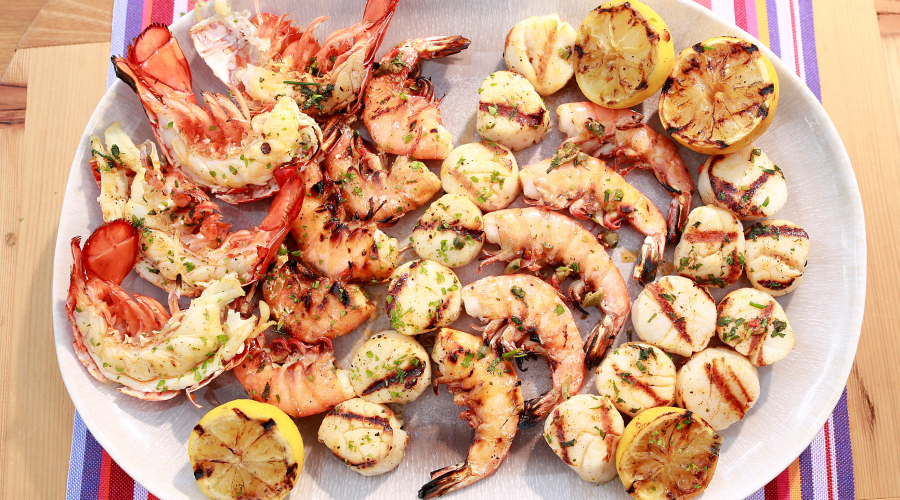
The Andaman and Nicobar Islands offer a unique culinary experience influenced by both local ingredients and the diverse cultures of its inhabitants. Most of the popular and exotic foods that you can enjoy in the Andamans are to be tasted for a complete culinary experience.
1. Among the seafood delicacies of Andaman there are some unique dishes that are loved by the people across the world.
- Fish Curry: A staple in the Andamans, fish curry is often prepared with fresh local fish, coconut milk and spices, reflecting a mix of Bengali and South Indian flavours.
- Grilled Lobster: The Andaman Islands are known for their fresh seafood, and grilled lobster is a favourite. Often served with lemon, butter and herbs, it highlights the freshness of the catch.
- Prawn Curry: Prawn curry, often made with coconut milk and spices, is another popular dish that offers a creamy, aromatic flavour.
2. The local tribal foods are curiously experimented by the foreign tourists when they visit this enigmatic land.
- Wild Fruit and Root-Based Dishes: Some tribal communities have diets based on wild fruits, tubers and roots, reflecting their close connection to the natural environment.
- Roasted Fish and Game: Tribes like the Onge and Jarawa are skilled in fishing and hunting, and they often cook food by roasting it over an open fire.
Suggested Read : How to reach neil island
3. The traditional dishes from settler communities are liked by many.
- Amritsari Kulcha and Chole: Influenced by Punjabi settlers, this dish is commonly found in local eateries.
- South Indian Staples: Dishes like dosa, idli and sambar are popular due to the influence of Tamil communities.
4. Tourists also look out for the unique local snacks which are a speciality of the region.
- Coconut Prawn Curry: A fusion dish made with fresh coconut and prawn, it is a creamy and flavourful option that highlights local ingredients.
- Macher Jhol (Fish Stew): A Bengali-style fish stew that’s popular among the Bengali community on the islands, made with mustard and spices.
5. Exotic Tropical Fruits
- Breadfruit: Breadfruit is a tropical fruit that’s abundant in the islands. It can be eaten raw or used in curries and side dishes.
- Mangosteen, Pineapple and Rambutan: Exotic fruits like mangosteen, pineapple and rambutan thrive in the islands and add a tropical flavour to meals and snacks.
6. Street Food
- Chaat: Influenced by Indian street food culture, chaat with spicy and tangy flavours is widely available in markets.
- Pakoras and Samosas: These are common street snacks, enjoyed with local chutneys and sauces. The salty sea air, a beach shack and some pakoras can give a new dimension to your vacation days in Andaman.
Suggested Read : Camping in andaman
7. Coconut-Based Dishes and Desserts
- Coconut: is widely used in Andaman cuisine, from main dishes to desserts. Coconut milk and grated coconut add flavour to curries, sweets and rice dishes.
The Andaman and Nicobar Islands offer a delightful blend of fresh seafood, tropical flavours and Indian cuisine influences, making the food experience here as unique as the islands themselves.
Livelihoods of Andaman and Nicobar Island
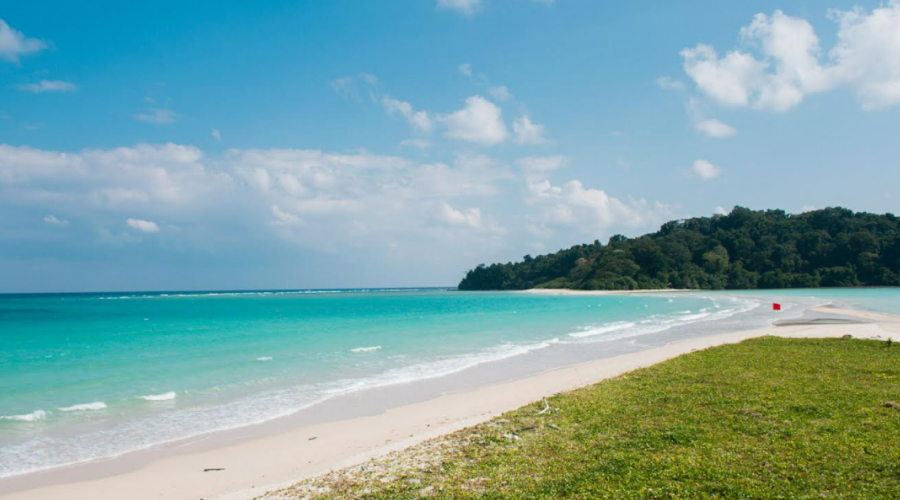
The people of the Andaman and Nicobar Islands have developed a variety of livelihoods that are adapted to the islands’ unique environment and cultural diversity. Some primary sources of livelihood in the Andamans have helped these few local communities to survive braving the uncertainties of a remote island.
Suggested Read : Waterfalls in andaman
- Fishing and Marine Harvesting: Fishing is one of the main sources of livelihood for the locals, as the islands are surrounded by rich marine ecosystems. Many families rely on fishing for sustenance and income, with some engaging in commercial fishing ventures. Shell and pearl collection are also part of marine-based activities. Some locals harvest and sell seashells or engage in small-scale pearl farming. Beautiful works of art are created and sold worldwide.
- Agriculture and Plantation Work: The islands support limited agriculture due to their tropical climate. Crops such as rice, coconut, areca nut (betel nut) and spices like pepper and cinnamon are commonly cultivated. Plantation work, particularly in coconut and areca nut farms, provides employment for many locals. The produce is used both for local consumption and for trade.
- Tourism and Hospitality: Tourism is a major contributor to the Andaman and Nicobar economy, with locals employed in hotels, resorts, restaurants and tour companies. The growth of eco-tourism has also created new opportunities, with residents working as guides, instructors and boat operators. Scuba diving, snorkelling and water sports centres have created numerous jobs, with locals trained as instructors, boat captains and diving assistants.
- Handicrafts and Artisanal Work: Handicrafts, especially those made from seashells, coconut shells and bamboo, are popular among tourists. Artisans create a variety of items, from jewellery to home décor, which are sold in local markets and shops. Wood carving is another craft, where locals produce unique carvings and souvenirs for tourists.
- Government Employment and Public Services: Many residents are employed by the government in various sectors, including education, health care, public works and administration. Government employment provides stable job opportunities, especially in Port Blair and other larger towns. Defence and naval bases in the islands also provide jobs to locals in security, maintenance and support services.
- Construction and Infrastructure Development: As the Andaman Islands continue to develop, the construction industry has provided employment opportunities in building roads, bridges, ports and tourism facilities. Many locals work as labourers, carpenters and masons.
- Traditional Livelihoods Among Tribal Communities: Indigenous tribes such as the Onge, Jarawa, Great Andamanese and Nicobarese have traditional ways of life centred on hunting, gathering, fishing and small-scale farming. These tribes are protected by the government, and many remain isolated, living off the land and sea. The government has implemented measures to protect tribal areas and restrict access, helping preserve the tribes’ traditional ways of life.
- Agribusiness and Small-Scale Trade: Small businesses such as grocery shops, vegetable stalls and local markets are common sources of livelihood. Farmers and vendors sell their produce in these local markets, providing a small but vital income stream. Spice cultivation and processing, particularly for pepper, cloves and cinnamon, also provide income for many small-scale farmers.
The Andaman and Nicobar Islands have a blend of traditional and modern livelihoods. While tourism and government jobs provide stability and income, traditional occupations like fishing, handicrafts and agriculture remain vital to the islanders’ way of life. The local communities continue to balance economic opportunities with sustainable practices to protect their natural surroundings and cultural heritage.
Suggested Read : Solo trip in andaman
Nature and Environment in Andaman
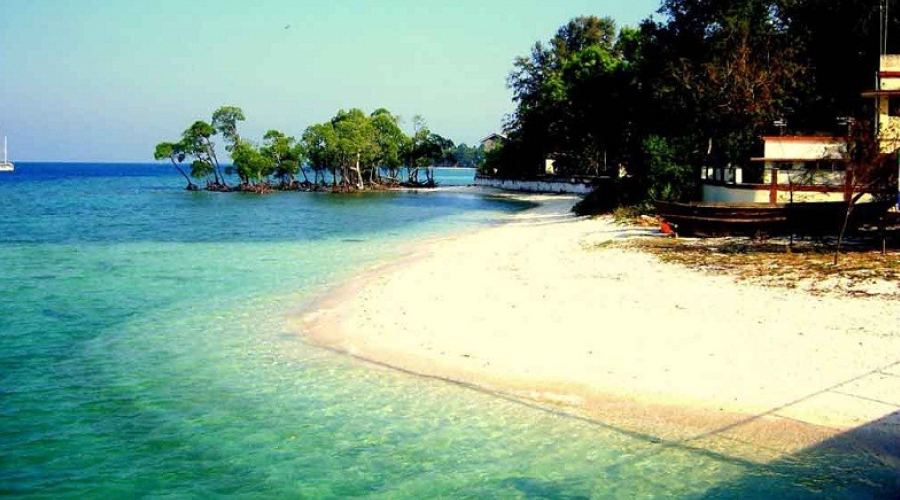
The Andaman and Nicobar Islands are renowned for their pristine natural environment, rich biodiversity and unique ecosystems. Here’s an overview of the natural beauty and environmental significance of the Andamans:
1. Lush Tropical Rainforests
The islands are covered with dense tropical rainforests, which house a rich variety of plant and animal species. These forests are crucial for maintaining the ecological balance and supporting biodiversity. Mangrove forests, found along the coastlines and river deltas, are essential habitats for fish, birds and other wildlife. They also act as natural barriers against coastal erosion and storms.
2. Diverse Marine Life and Coral Reefs
The Andaman and Nicobar Islands are famous for their vibrant coral reefs, which are home to thousands of species of marine life. Coral reefs around islands like Havelock and Neil attract divers and marine biologists from around the world. Marine biodiversity includes fish, sea turtles, dolphins and even rare species like dugongs (sea cows). The reefs play a crucial role in protecting shorelines and supporting fisheries.
3. Protected National Parks and Sanctuaries
The Andamans have numerous protected areas, including Mahatma Gandhi Marine National Park, Rani Jhansi Marine National Park and Campbell Bay National Park in the Nicobar Islands. These parks protect the diverse flora and fauna, especially endangered species. Wildlife Sanctuaries in the Andamans protect animals like saltwater crocodiles, indigenous birds and exotic butterflies. The islands are also home to rare species like the Andaman wild pig and the Nicobar pigeon.
4. Endemic Flora and Fauna
The islands support unique species that are not found anywhere else, including the Andaman wood pigeon, Andaman wild boar and certain orchid species. This makes the islands an important area for biodiversity conservation. The flora is similarly diverse, with a variety of tropical plants, mangroves and salt-tolerant species, making the islands a fascinating area for botanical research.
5. Exotic Beaches and Clear Blue Waters
Andaman’s beaches, such as Radhanagar Beach, Kalapathar Beach and Laxmanpur Beach, are known for their stunning white sand and crystal-clear turquoise waters. These beaches attract tourists seeking natural beauty, tranquillity and water sports. The clear waters around these beaches make them ideal for snorkelling and diving, allowing visitors to experience the colourful coral reefs and marine life up close.
6. Volcanic Islands and Geothermal Springs
The Andaman Islands are home to India’s only active volcano, Barren Island Volcano, which occasionally erupts and offers a unique geological attraction. Mud volcanoes in places like Baratang Island and hot springs in the Andamans add to the geological uniqueness of the region, making it a hotspot for geological studies.
7. Mangroves and Coastal Ecosystems
Mangrove forests, particularly on islands like Baratang, play a significant role in the ecosystem by providing habitat, preventing erosion and absorbing excess carbon. They are essential breeding grounds for fish and support numerous bird species. The coastal ecosystems of the Andamans also include seagrass beds that are vital feeding grounds for dugongs and provide shelter to various marine organisms.
8. Threats and Conservation Efforts
The Andaman and Nicobar Islands face environmental threats from climate change, rising sea levels and pollution from tourism. These issues impact coral reefs, coastal ecosystems and the islands’ delicate biodiversity. Conservation efforts include regulating tourism, creating protected marine areas and promoting eco-friendly practices. NGOs and government initiatives are also working to raise awareness about sustainable practices among locals and tourists.
9. Eco-Tourism and Responsible Travel
The natural beauty of the Andamans has led to a rise in eco-tourism, with an emphasis on preserving the environment. Eco-friendly resorts, diving centres that follow sustainable practices and community-based tourism initiatives are part of the islands’ approach to responsible travel. The islands offer opportunities for activities like snorkelling, diving, bird watching and forest trekking, allowing visitors to appreciate nature while minimizing their environmental footprint.
The nature and environment of the Andaman Islands are breathtakingly beautiful and ecologically significant. The region’s diverse ecosystems, endemic species and conservation efforts make it not only a travel destination but also an area of great environmental importance. Balancing tourism with conservation remains a key challenge, ensuring that future generations can continue to experience and benefit from the natural beauty of the Andamans.
Festivals of Andaman and Nicobar Islands
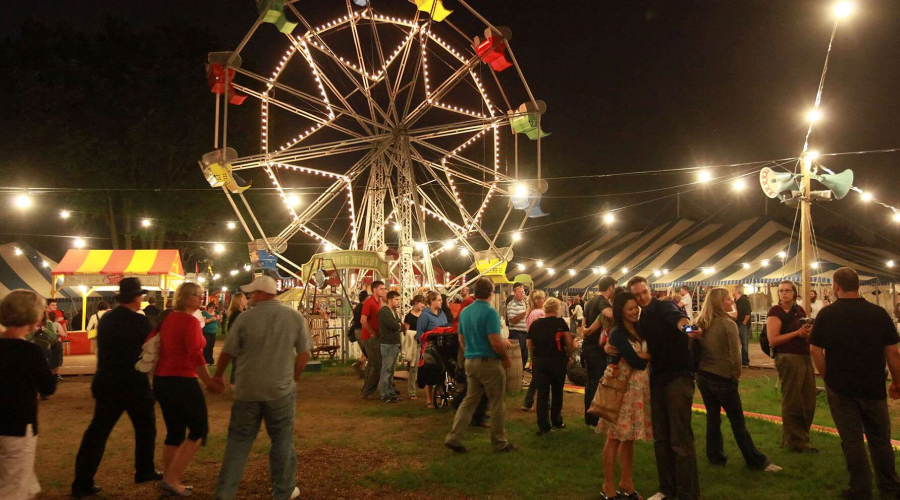
The Andaman and Nicobar Islands are home to a rich cultural tapestry that is celebrated through a variety of festivals, showcasing the unique heritage of the indigenous tribes, as well as the influence of settlers from mainland India and other parts of Asia. The main festivals of Andaman highlight the cultural diversity and vibrant traditions of the islands.
1. Island Tourism Festival
Held annually in January, the Island Tourism Festival is a 10-day extravaganza celebrating the culture, natural beauty and tourism of the Andaman and Nicobar Islands. Organized in Port Blair, it includes cultural performances, exhibitions, water sports, adventure activities and food fairs. The festival draws locals and tourists alike, offering traditional dance performances, music, handicraft displays and stalls featuring local cuisine. Events are also held on other islands like Havelock and Neil, showcasing the island life and traditions.
2. Subhash Mela
Celebrated on January 23rd, the birthday of freedom fighter Subhash Chandra Bose, Subhash Mela is a week-long festival on Havelock Island. The festival includes cultural programs, sports events and performances that honour Bose’s legacy and promote local talent. Locals come together for cultural shows, competitions and exhibitions, making it a lively time for visitors to experience the island’s community spirit and learn about Bose’s influence in the region.
3. Block Mela
Block Mela is celebrated across various parts of the islands, particularly focusing on the different regions or blocks of the Andaman and Nicobar Islands. It is organized by local administration and showcases the socio-cultural diversity of the islands, with local crafts, foods and performances. It serves as a platform for locals to present their traditional handicrafts, tribal art and agricultural products. The mela provides insight into the rural and agricultural lifestyle of the islanders.
4. Panguni Uthiram
Panguni Uthiram is a significant festival for the Tamil community in the Andamans, usually held in March. It celebrates the divine marriage of Lord Shiva and Goddess Parvati, as well as Lord Murugan. Devotees gather at temples, particularly the famous Sri Karpaga Vinayagar Temple in Port Blair, to offer prayers and take part in processions. The festival includes elaborate rituals, decorated chariots and cultural events, showcasing the Tamil community’s deep-rooted traditions and religious practices on the islands.
5. Oyster Festival
The Oyster Festival, celebrated by the indigenous Nicobarese tribes, is a unique festival showcasing the Nicobarese people’s connection to the sea. Held in the Nicobar Islands, it includes feasts, dance and traditional music. The festival highlights the Nicobarese community’s cultural practices and maritime heritage. As this is primarily a tribal festival, it remains relatively private, but it reflects the Nicobarese traditions that are deeply connected with nature and the ocean.
6. Diwali and Durga Puja
Celebrated widely across the Andaman and Nicobar Islands due to the significant Hindu population, Diwali and Durga Puja bring vibrant festivities to the islands. During these festivals, towns are illuminated with lights, homes are decorated with rangolis and temples are crowded with devotees. Durga Puja is particularly popular in Port Blair, with grand pandals (temporary temples) set up and cultural programs organized to honour the goddess. Diwali is celebrated with firecrackers, feasting and traditional rituals.
7. Eid and Christmas
Due to the multicultural population, festivals like Eid and Christmas are celebrated with equal enthusiasm. The islands’ Muslim community celebrates Eid with prayers, communal meals and festivities, especially in Port Blair. Christmas is celebrated by the Christian community and includes church services, carol singing and feasts. The celebration reflects the islands’ diversity and harmony among communities.
8. Other Tribal Festivals
The indigenous tribes of the Andaman and Nicobar Islands celebrate various festivals that are unique to their cultures, such as Kayal, Ogit and Ossuary Feast, which mark important events, hunting rituals and seasonal changes. These festivals involve dance, music and rituals that honour their connection to nature and ancestral spirits. While many of these tribal festivals are private, they reflect the spiritual and cultural life of the islands’ original inhabitants.
The festivals of the Andaman and Nicobar Islands reflect a beautiful fusion of indigenous traditions, Indian cultural practices and modern celebrations. These festivals offer visitors a glimpse into the islands’ rich heritage, showcasing the harmony among diverse communities and the deep respect for nature and traditions. As an outsider, it is an enlivening know-how to fathom some of the mystery and magic this group of islands possess.


